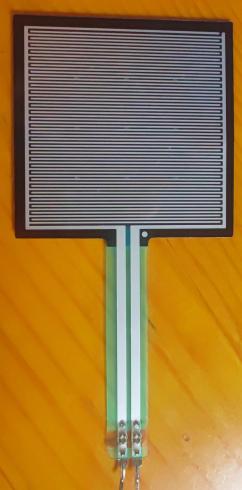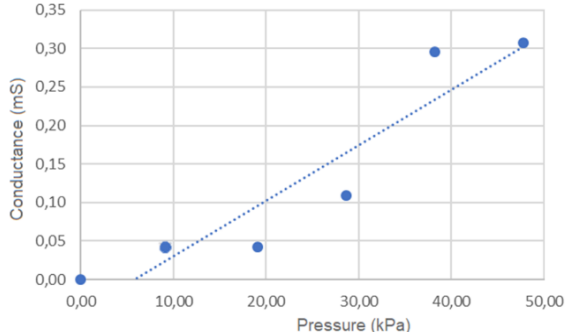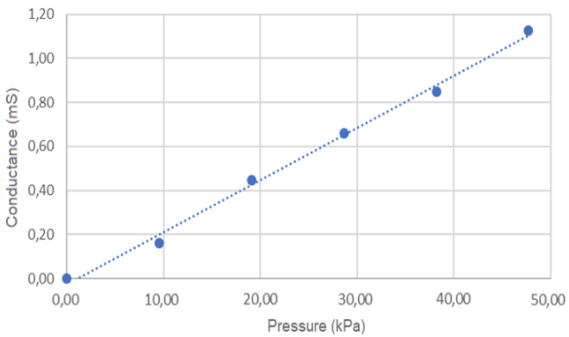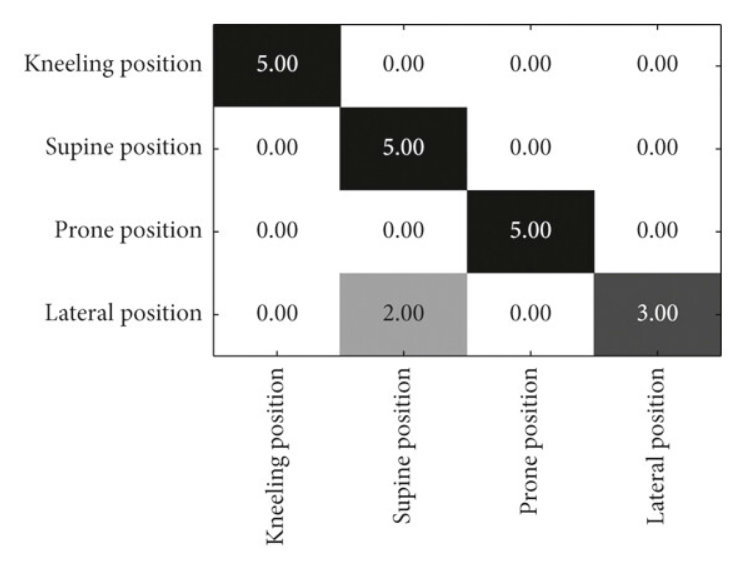1. Introduction
Sleep is an autonomous, reversible behavior controlled by an internal biological clock. Humans spend about one-third of their lives sleeping, a physiological process that is precisely controlled by several areas of the brain and is essential for healthy survival [1,2]. Sleep allows the body to remove metabolic waste produced by brain neurons, restore energy and physical strength, enhance immunity, promote growth and development, improve learning and memory, and help stabilize emotions. It is a necessary behavior to maintain normal physiological activities [3]. However, due to the increasing competitive pressure in modern society, people's bad habits have led to sleep disorders in some people. For clinical patients, good sleep can effectively relieve symptoms. Therefore, how to improve patients' sleep experience is a medical problem that needs to be addressed urgently. Analysis of factors affecting sleep includes physiological factors, psychological factors, and external environmental factors [4]. With the continuous deepening of population aging, the number of elderly people with limited mobility in hospitals and nursing staff is increasing. This trend has had an impact on the existing medical system. For example, the limited mobility of the elderly may lead to the inability to convey emergency signals in time, causing accidental rolling, etc. In addition, the elderly who stay in bed for a long time are more likely to develop pressure sores. Pressure ulcers usually occur on bony prominences or on the skin and underlying soft tissue that is in contact with medical devices [5]. Pressure ulcers cause great pain to patients and increase the workload and medical costs of medical staff [6]. Therefore, preventing accidental falls and pressure ulcers is particularly important. There are many products on the market that aim to improve this aspect, including smart medical mattresses. The purpose of smart medical mattresses is to prevent patients from developing pressure ulcers and accidentally rolling over [7]. Smart mattresses can also be connected to the Internet of Things (IoT) to assist medical staff in providing assistance. However, medical mattresses still face problems such as high economic costs, low investment, and insufficient experimental testing. The widespread use of sensor embedded designs is a typical example of this complexity, in which the careful selection of sensors and the careful selection of mattress materials are important and challenging considerations. This article will focus on the working principles of sensors, the working mode of medical mattress systems, and the comparative selection of materials.
2. Literature review
In recent years, the development of smart medical mattresses has attracted the attention of many scholars. Previously, most medical devices were wearable when measuring electrocardiograms (ECGs), requiring patients to directly contact the product, often through wires and detection electrodes to contact human skin. Long-term wearing will cause discomfort to users, and in special environments such as strong magnetic fields [8], the equipment is susceptible to serious interference and is not suitable for widespread use. Therefore, non-contact sensors based on ballistocardiograms (BCGs) have received widespread attention from researchers [9]. There are many sensors of this type, but the high cost, low safety, and susceptibility to interference have greatly limited the application of such sensors in monitoring heart rate and respiratory rate. Therefore, some researchers have designed a fiber optic structure sensor. By inserting a small core diameter optical fiber into the SMS sensing optical fiber, the received BCG signal has less noise, higher accuracy, and is easier to process signals. In addition, this mattress is non-contact and completely sensor-less, and has broad prospects in the field of healthcare[9]. Liu & Li (2020) mentioned a smart turning mattress that relies on air cushion materials and pressure and temperature sensors to work together[10]. The intelligent turning mattress has the functions of automatic left turning, automatic right turning, automatic back lifting, automatic leg bending, cone-shaped airbag fluctuation, etc. It contains a temperature sensor module, an air pressure monitoring module, and a heart rate monitoring module, realizing the intelligence of the mattress, and has the advantages of safety, reliability, and low price. The two types of sensor medical mattresses mentioned above, namely the fiber optic structure sensor mattress and the multifunctional smart mattress, are compared. The cost of fiber optic is relatively high, but its high precision and low noise are its advantages in market competition. In addition, it can work without contact with the patient, which can not only increase the user's comfort, but also reflect safety. The multifunctional smart mattress uses temperature sensors, air pressure monitoring and heart rate monitoring modules to ensure the user's sleeping experience in all aspects. The deformation of the mattress is deceptively adjusted through the feedback of temperature and pressure data. The whole set of equipment has the advantages of low cost and high safety[10], and realizes intelligent control. However, due to problems such as air leakage of the airbag material, the subsequent maintenance cost and the user's comfort experience will be affected. In addition, the environmental impact factor of the temperature sensor is large, which will affect the measurement accuracy. Existing medical mattresses have put forward unique insights in terms of safety and intelligence, but there are still some gaps in the literature. Most studies focus on the theoretical level and model construction, lacking specific medical experiments. The connection between sensors and mattress materials is not close. For example, mattresses based on fiber optic sensors focus on the safety and precision of the sensor, but the mattress materials and integration relationship that go with it are not introduced in detail. The multifunctional mattress integrates a large number of sensors and introduces the working principle of the airbag material driven by it, but the selection and particularity of the sensors are not explained in detail. Therefore, the safety and low cost mentioned in the paper still need to be considered. This paper aims to study an embedded pressure sensor for use in mattresses, which can simulate user postures through pressure data, assist in mattress shape transformation, and realize intelligence. The article will first compare various pressure sensors and explore the accuracy issues in embedded environments to determine the appropriate pressure sensor, and then focus on comparing the material selection of mattresses. Finally, the article will explain the complete mattress design structure, including the mattress's intelligent turning system and posture analysis auxiliary medical diagnosis system.
3. Methodology
3.1. Overview
This paper mainly aims to analyze and study the shortcomings of mattress design under the existing medical system, and focuses on the analysis and evaluation of the embedded pressure sensor design of medical mattresses. Although no actual experiments were conducted, this study involves the summary, exploration and analysis of existing literature and scientific experiments. It aims to understand the actual scientific help of these sensors in the medical system, including helping patients relieve pressure sores, assist in turning over and medical diagnosis.
3.2. Pressure sensors in smart mattresses
This paper mainly designs and evaluates an embedded pressure sensor for use in medical mattresses to help patients turn over independently and simulate the patient's posture based on the recorded pressure data to assist in relevant diagnosis. The structure of the entire mattress can be divided into the hardware part of the pressure sensor and mattress material, and the software part of the development platform. In the initial experimental stage, the sensor of choice can be a thin film pressure sensor (FSR), which is essentially a resistivity sensor. Compared with other force sensors, force sensing resistors have some advantages. First, they can be made of flexible materials and are very thin, which allows them to adapt to the insertion position and be embedded; second, they are very robust to noise and the adjustment of the electronic equipment is simple; third, the unit cost is relatively low [11]. Although no actual experiments were conducted in this study, we conducted theoretical analysis and simulation tests based on the technical specifications of these devices and existing literature.
3.3. FSR Experimental Design
The sensor selected in the initial stage of this experiment is the FSR406 thin film pressure sensor (Figure 1). The effective area is 36.5 square millimeters, and the range is from 20g to 10kg. It is essentially a variable resistor. The greater the force applied to it, the smaller the resistance. The main advantages are low cost, integration, and easy operation. According to relevant literature, there is an experiment in which different weight values (150, 300, 450, 600 and 750 grams) are placed on the surface of the sensor and a benchtop multimeter is used to measure the resistance value of the sensor, which changes according to the applied force. The multimeter is connected to a computer, which stores the resulting data of the pressure sensor readings. And to ensure that the weight is evenly distributed on the sensing area of the sensor, two materials with different hardness and texture are tested, namely acrylic circles and felt circles [12].

Figure 1. FSR406 thin-film pressure sensor.
3.4. Smart mattress system
The previous experiment discussed the requirements of FSR thin film pressure sensors for the characteristics of mattress materials. The following experiment will give a comprehensive description of the intelligent mattress system. The experimental design and results are also derived from existing relevant literature. First of all, the intelligent mattress referred to in this article can record the user's real-time data through embedded sensors, including pressure, humidity and other sensors, detect the user's different postures through pressure feedback, including lying flat, lying on the side and other postures, and provide real-time, autonomous and intelligent support according to the algorithm, that is, assist the user's posture adjustment to achieve a smoother and gentler dynamic mode adjustment [13].
3.5. Operation test of smart mattress
The following is the experimental principle of the reference. First, the mattress material is mainly airbags. The bed body is divided into 180 modules. The user's height and posture are identified through the pressure matrix, and then the airbag pressure is automatically adjusted according to the pressure uniformity to ensure comfort. In addition, the template matching method is introduced for sleeping posture recognition. The contour features are extracted by grayscale processing and binarization of the pressure matrix, and a similarity discriminant function is constructed for classification [13]. The experimental operation is as follows. Five subjects of different ages, weights, and heights are selected, of which 3 are female and 2 are male. The specific data are shown in Table 1 [13]. Test the pressure feedback under different postures and analyze the posture according to the established function to determine the matching degree between the posture analyzed by the computer and the actual posture.
Table 1: Data of the experimenters[13]
Number | Age | Sex | Height | Weight |
1 | 25 | Female | 1.65 | 55 |
2 | 35 | Male | 1.72 | 70 |
3 | 42 | Male | 1.75 | 67 |
4 | 55 | Female | 1.55 | 60 |
5 | 40 | Female | 1.62 | 52 |
3.6. Result analysis method
Placing objects of different weights on the sensor can effectively simulate the relationship between the conductivity of the sensor and the applied pressure. Explore the response time of the sensor under different materials to verify the sensitivity of the sensor. In the smart mattress, the mattress is modularized and the pressure data of different parts reflects the posture of the person, which helps to improve the comfort of the user.
4. Results
4.1. Experimental results of FSR
The experimental part of FSR aims to understand its working principle. In the first experiment, an acrylic gasket was used to analyze the sensitivity of the sensor. The experimental data is shown in Figure 2[12]. The sensor under this system did not show an obvious linear relationship. It can be found that the experimental data did not show a uniform change but fluctuated up and down in a straight line. In the second experiment, the acrylic gasket was replaced with a felt gasket. The experimental data is shown in Figure 3[12]. The sensor under this system showed an obvious linear change. Observing the overall data, it can be found that the data is mainly distributed on a clearly visible straight line, showing an obvious linear change.

Figure 2. Sensitivity study of the FSR sensor using an acrylic spacer between the sensor and the weight. Reprinted from[12].

Figure 3. Sensitivity study of FSR sensor using a felt spacer between the sensor and the weight.Reprinted from[12].
4.2. Smart mattress test results
Figure 4 shows the confusion matrix of the experimental results. The larger the number, the larger the error between the actual and predicted. The analysis results show that the kneeling, supine and prone postures are more accurately recognized. However, some errors occurred when recognizing the side-lying posture of the lighter subjects (52kg, 55kg). This is mainly due to the similarity between the side-lying and supine postures. When the subject keeps the body straight and not obviously bent when lying on the side, the distribution of the arms is difficult to distinguish clearly, resulting in confusion between the supine and side-lying postures. Especially in the sleeping state, the lighter subjects keep the body straight when lying on the side, and the arms are close to the body. At this time, the airbag volume of the supine and side-lying is close, which increases the difficulty of distinction. In contrast, the differences in different postures of the heavier subjects are more obvious, so they are easier to distinguish. It is worth noting that the recognition accuracy of the system is also improved when the subject has a significant bending posture when lying on the side[13].

Figure 4. Confusion matrix of four kinds of sleeping position recognition results[13].
5. Discussion
5.1. FSR Pressure Sensor
The following conclusions can be drawn from the analysis of the pressure data feedback under the above two different systems: the FSR406 pressure sensor can change the conductivity linearly, thereby affecting the current change in the mattress and changing the deformation degree and deformation speed of the mattress in a timely manner according to this change, so as to achieve the intelligent supine and side-lying adjustment functions. Secondly, for different stress-bearing materials, the data displayed by the FSR406 pressure sensor are not the same. The experimental feedback shows that soft and tough materials are more likely to linearly represent pressure changes, which is consistent with the linear changes required in the mattress design, that is, the change of the mattress is a linear process. Therefore, the mattress material should pay attention to flexibility, and softer materials can better perform the role of the pressure sensor. Compared with the optical fiber sensor mentioned in the literature review, this pressure sensor has the advantages of low cost and is suitable for applications without high precision requirements; it is easy to integrate and can be well embedded in medical mattresses; the working principle is simple and the circuit design is convenient. The disadvantages are low precision; it needs to be combined with the circuit, low safety; nonlinear output data, which increases the difficulty of data processing. The design logic of the experiment is rigorous and the operation process is clear, but it is obviously not enough to test only two types of gaskets. Therefore, more test objects should be added when improving the experiment, and different hardness, toughness and ductility can be considered. The above is a test of the FSR pressure sensor, which will eventually be put into medical mattresses for embedded processing. The market orientation is mainly hospitals and elderly people with limited mobility.
5.2. Intelligent medical mattress system
The essence of a smart medical mattress is to measure the pressure changes of different parts of the patient on the mattress through multiple sets of built-in pressure sensors, and to understand the patient's posture changes (including lying flat, lying on the side, and standing up) by reading these pressure parameter changes. These data will help medical staff understand the patient's condition immediately and take necessary emergency measures in abnormal situations [7]. In addition, the pressure data of different parts can be recorded in a database to study the pressure values of different parts of the mattress and facilitate the subsequent update and upgrade of mattress materials. A medical mattress can be divided into modules according to different parts (such as the head, waist, etc.) from a complete piece. Different areas are responsible for measuring the pressure value of a part, which can also facilitate the partial replacement and upgrade of the mattress, and the processing of measurement data will also be more convenient.
6. Conclusion
There are many kinds of sensors in the existing research, all of which are making the mattress more intelligent. In the comparison of multiple sensors, pressure sensors are selected mainly because of their high economy and simple operation. In the future, hospitals, caregivers and even homes can put them to use, and while considering the economy, they can visualize pressure data to assist in treatment and care. At present, there are many kinds of materials for mattresses, including air bags, gels, water pads, etc. In the context of utilizing thin-film pressure sensors within mattresses, the selection of materials assumes paramount importance due to its direct impact on patient comfort, sensor acceptance, and overall durability. Consequently, the conduct of rigorous material testing will become increasingly essential in the future to ensure optimal performance and longevity of these systems. In view of the nonlinear reading and sensitivity limitations of FSR pressure sensors, more pressure sensor devices will be compared in future experiments to improve the sensitivity of the products.
References
[1]. Collins B., Pierre-Ferrer S., Muheim C. et al., Circadian VIPergic neurons of the suprachiasmatic nuclei sculpt the sleep-wake cycle, Neuron. (2020) 108, no. 3, 486–499, https://doi.org/10.1016/j.neuron.2020.08.001.
[2]. Mieda M., Neural mechanisms underlying the central circadian clock of the suprachiasmatic nucleus, Brain Nerve. (2020) 72, no. 11, 1143–1150, https://doi.org/10.11477/mf.1416201667.
[3]. Besedovsky L., Lange T., and Haack M., The sleep-immune crosstalk in health and disease, Physiological Reviews. (2019) 99, no. 3, 1325–1380, https://doi.org/10.1152/physrev.00010.2018, 2-s2.0-85063950531.
[4]. Troynikov O., Watson C. G., and Nawaz N., Sleep environments and sleep physiology: a review, Journal of Thermal Biology. (2018) 78, 192–203, https://doi.org/10.1016/j.jtherbio.2018.09.012, 2-s2.0-85055260484.
[5]. Edsberg LE, Black JM, Goldberg M, McNichol L, Moore L, Sieggreen M. Revised National Pressure Ulcer Advisory Panel Pressure Injury Staging System: Revised Pressure Injury Staging System. J Wound Ostomy Continence Nurs. 2016;43(6):585–97. https://doi.org/10.1097/WON.0000000000000281.
[6]. Li Z, Lin F, Thalib L, Chaboyer W. Global prevalence and incidence of pressure injuries in hospitalised adult patients: A systematic review and meta-analysis. Int J Nurs Stud. 2020;105:103546. https://doi.org/10.1016/j.ijnurstu.2020.103546.
[7]. Jung W, Hong Y. A Design and Implementation of a Smart Bed for Elderly Patients[J]. International Journal of Elderly Welfare Promotion and Management, 2017, 1(1): 1-6.
[8]. Faustman D L. Methods of treating and diagnosing disease using biomarkers for bcg therapy: U.S. Patent Application 17/689,117[P]. 2022-6-23.
[9]. Ke C, Cai Y, Zhao T, et al. Research on intelligent mattress based on improved SMS structure sensing fiber[C]//Journal of Physics: Conference Series. IOP Publishing, 2021, 1802(2): 022023.
[10]. Liu, W. X., & Li, J. (2023). Design of Intelligent Turning Medical Mattress. Machine Tool & Hydraulics, 47(8), 53-56.
[11]. Giovanelli, D. and Farella, E. (2016). ‘Force Sensing Resistor and Evaluation of Technology for Wearable Body Pressure Sensing’. In Journal of Sensors. Hindawi, pp. 1–13. doi: 10.1155/2016/9391850.
[12]. Pereira S, Fonseca J, Almeida J, et al. Embedded Textile Sensing System for Pressure Mapping and Monitoring for the Prevention of Pressure Ulcers[C]//BIODEVICES. 2019: 291-296.
[13]. Zhang, Z., Jin, X., Wan, Z., Zhu, M., & Wu, S. (2021). A feasibility study on smart mattresses to improve sleep quality. Journal of Healthcare Engineering, 2021, Article 6127894, 12 pages. https://doi.org/10.1155/2021/6127894
Cite this article
Xu,B. (2024). Design and implementation of an intelligent medical mattress system. Applied and Computational Engineering,92,107-114.
Data availability
The datasets used and/or analyzed during the current study will be available from the authors upon reasonable request.
Disclaimer/Publisher's Note
The statements, opinions and data contained in all publications are solely those of the individual author(s) and contributor(s) and not of EWA Publishing and/or the editor(s). EWA Publishing and/or the editor(s) disclaim responsibility for any injury to people or property resulting from any ideas, methods, instructions or products referred to in the content.
About volume
Volume title: Proceedings of the 6th International Conference on Computing and Data Science
© 2024 by the author(s). Licensee EWA Publishing, Oxford, UK. This article is an open access article distributed under the terms and
conditions of the Creative Commons Attribution (CC BY) license. Authors who
publish this series agree to the following terms:
1. Authors retain copyright and grant the series right of first publication with the work simultaneously licensed under a Creative Commons
Attribution License that allows others to share the work with an acknowledgment of the work's authorship and initial publication in this
series.
2. Authors are able to enter into separate, additional contractual arrangements for the non-exclusive distribution of the series's published
version of the work (e.g., post it to an institutional repository or publish it in a book), with an acknowledgment of its initial
publication in this series.
3. Authors are permitted and encouraged to post their work online (e.g., in institutional repositories or on their website) prior to and
during the submission process, as it can lead to productive exchanges, as well as earlier and greater citation of published work (See
Open access policy for details).
References
[1]. Collins B., Pierre-Ferrer S., Muheim C. et al., Circadian VIPergic neurons of the suprachiasmatic nuclei sculpt the sleep-wake cycle, Neuron. (2020) 108, no. 3, 486–499, https://doi.org/10.1016/j.neuron.2020.08.001.
[2]. Mieda M., Neural mechanisms underlying the central circadian clock of the suprachiasmatic nucleus, Brain Nerve. (2020) 72, no. 11, 1143–1150, https://doi.org/10.11477/mf.1416201667.
[3]. Besedovsky L., Lange T., and Haack M., The sleep-immune crosstalk in health and disease, Physiological Reviews. (2019) 99, no. 3, 1325–1380, https://doi.org/10.1152/physrev.00010.2018, 2-s2.0-85063950531.
[4]. Troynikov O., Watson C. G., and Nawaz N., Sleep environments and sleep physiology: a review, Journal of Thermal Biology. (2018) 78, 192–203, https://doi.org/10.1016/j.jtherbio.2018.09.012, 2-s2.0-85055260484.
[5]. Edsberg LE, Black JM, Goldberg M, McNichol L, Moore L, Sieggreen M. Revised National Pressure Ulcer Advisory Panel Pressure Injury Staging System: Revised Pressure Injury Staging System. J Wound Ostomy Continence Nurs. 2016;43(6):585–97. https://doi.org/10.1097/WON.0000000000000281.
[6]. Li Z, Lin F, Thalib L, Chaboyer W. Global prevalence and incidence of pressure injuries in hospitalised adult patients: A systematic review and meta-analysis. Int J Nurs Stud. 2020;105:103546. https://doi.org/10.1016/j.ijnurstu.2020.103546.
[7]. Jung W, Hong Y. A Design and Implementation of a Smart Bed for Elderly Patients[J]. International Journal of Elderly Welfare Promotion and Management, 2017, 1(1): 1-6.
[8]. Faustman D L. Methods of treating and diagnosing disease using biomarkers for bcg therapy: U.S. Patent Application 17/689,117[P]. 2022-6-23.
[9]. Ke C, Cai Y, Zhao T, et al. Research on intelligent mattress based on improved SMS structure sensing fiber[C]//Journal of Physics: Conference Series. IOP Publishing, 2021, 1802(2): 022023.
[10]. Liu, W. X., & Li, J. (2023). Design of Intelligent Turning Medical Mattress. Machine Tool & Hydraulics, 47(8), 53-56.
[11]. Giovanelli, D. and Farella, E. (2016). ‘Force Sensing Resistor and Evaluation of Technology for Wearable Body Pressure Sensing’. In Journal of Sensors. Hindawi, pp. 1–13. doi: 10.1155/2016/9391850.
[12]. Pereira S, Fonseca J, Almeida J, et al. Embedded Textile Sensing System for Pressure Mapping and Monitoring for the Prevention of Pressure Ulcers[C]//BIODEVICES. 2019: 291-296.
[13]. Zhang, Z., Jin, X., Wan, Z., Zhu, M., & Wu, S. (2021). A feasibility study on smart mattresses to improve sleep quality. Journal of Healthcare Engineering, 2021, Article 6127894, 12 pages. https://doi.org/10.1155/2021/6127894









